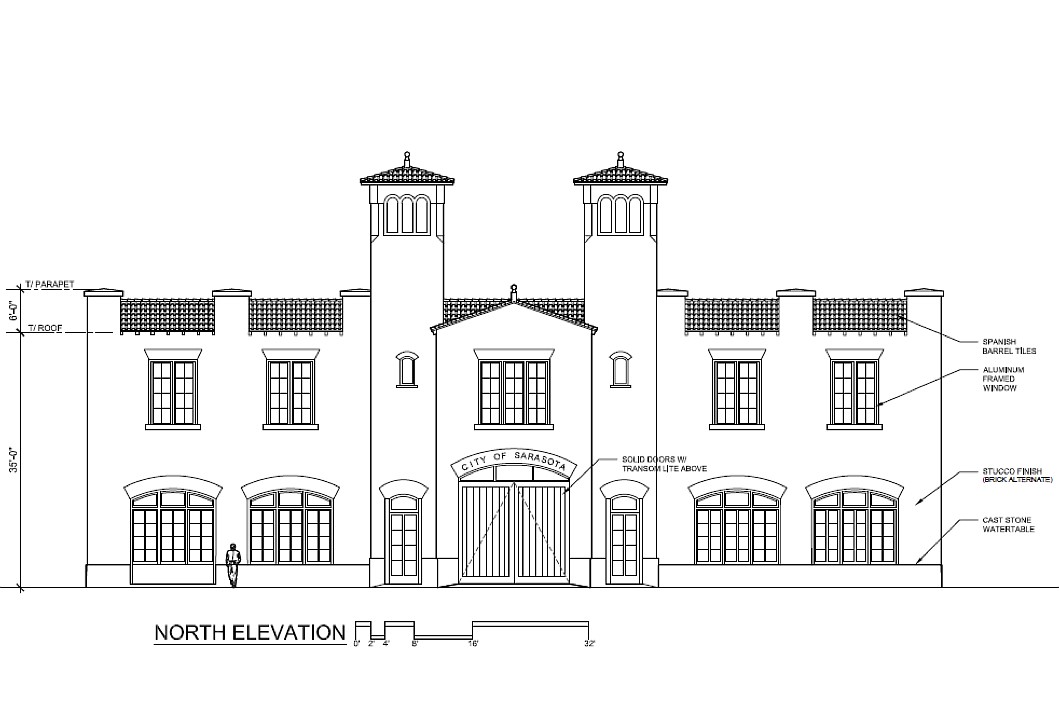- April 25, 2024
-
-
Loading

Loading

Georgia Court was out for a walk on a Saturday morning when a neighbor shared a surprising bit of news: According to a city lawyer at a recent meeting, Court had agreed to let the city dig a ditch through her yard to install sewage pipes.
At that City Commission meeting, the board was debating a project plagued with setbacks, the construction of Lift Station 87. One portion of that meeting was devoted to considering the merits of a “microtunneling” approach for installing pipes, thought to be less expensive and less invasive, versus an “open cut” approach, which could give the city an advantage in an ongoing lawsuit with a previous engineering firm.
Although the current engineering firm was committed to the microtunneling approach, a lawyer the city retained to work on the Lift Station 87 project said officials should at least think about the open cut option. To do so, Alan Tannenbaum acknowledged, the city would have to encroach on private property — but that wouldn’t be a problem, because affected property owners already suggested they’d be OK with the disruption, he said.
Although Court had been casually following the developments of the project in the news, the entirety of the discussion at that meeting was off of her radar — including, peculiarly, the idea that she would allow the city to tear up her property.
“Of course, the answer was no,” Court said. “I never had any idea it was even being considered.”
This confusion wasn’t an isolated incident. Cathy Layton, like Court, resides on Lincoln Drive near Hudson Bayou. Like Court, Layton’s property would have been affected by an alternate open-cut option, and like Court, she didn’t find out about the city’s plans until a friend told her about the meeting after the fact.
Neither Court nor Layton knows the origins of that miscommunication. Neither one was in close contact with anyone involved in the project, they say. Both were quick to send strongly worded messages to the city to clarify that they did not, in fact, consent to the use of their property for the project.
“I wanted them to be very clear that that was not OK with us — that we were not agreeing with being an alternative,” Layton said.
“I would not consent to them putting a major sewer line through my property,” Court said. “That's the answer to that one.”
"I would not consent to them putting a major sewer line through my property. That's the answer to that one." — Georgia Court
This misstep may not end up leaving a particularly big impact on the Lift Station 87 project as a whole, because engineering firm McKim & Creed has preferred a microtunneling approach all along. Furthermore, according to project manager Robert Garland, even the open-cut routes presented earlier this month were conceptual and subject to change.
“We have a permit in hand already to construct the 36-inch sewer under the bayou through microtunneling,” Garland said, indicating his team is just awaiting direction from the commission.
Still, it is another mistake in a long line of errors associated with the Lift Station 87 project, which has seen delays and cost increases since its conception in 2006. Today, the costs are projected at $32 million, more than three times the original bid for construction. The most recent timeline has the project completion scheduled for August 2020, nine years past the original targeted completion date.
Commissioner Susan Chapman, who passed along messages from Court and Layton to other city officials, said she was eventually able to track down an explanation for why Tannenbaum reported the residents were OK with the project — although she wasn’t necessarily satisfied with the logic.
“They said, ‘Well, she was really pleasant and nice and we assumed she would agree,’” Chapman said.
"We've just got to get it done, because not doing it and hesitating — it just costs more and more money." — Commissioner Susan Chapman
Chapman, whose history with the project dates back to the original site selection, said there are more problems with the Luke Wood Park site than a preliminary analysis indicated. Still, citing the drawn-out process for picking a home for the lift station, Chapman said she still believes the best way forward is continuing at the current location.
“We've just got to get it done, because not doing it and hesitating — it just costs more and more money,” Chapman said. “The question is, how are we going to pay for it?”
That’s not to say she’s fine with the current course of action. Chapman suggested one cost-cutting measure could be nixing the project’s monthly public outreach meetings, considering what she perceives to be a lack of updates. She also indicated she’d be interested in bringing aboard a specialist whose work entails “moving troubled projects faster, cheaper and smarter,” and she plans to raise that suggestion at a future meeting.
As the City Commission has deferred any action during the last two discussions of the Lift Station plans, Garland said he’s eager to push ahead on construction of the lift station once he gets approval.
“We appreciate the continued patience of the residents,” Garland said. “We look forward to getting this done.”